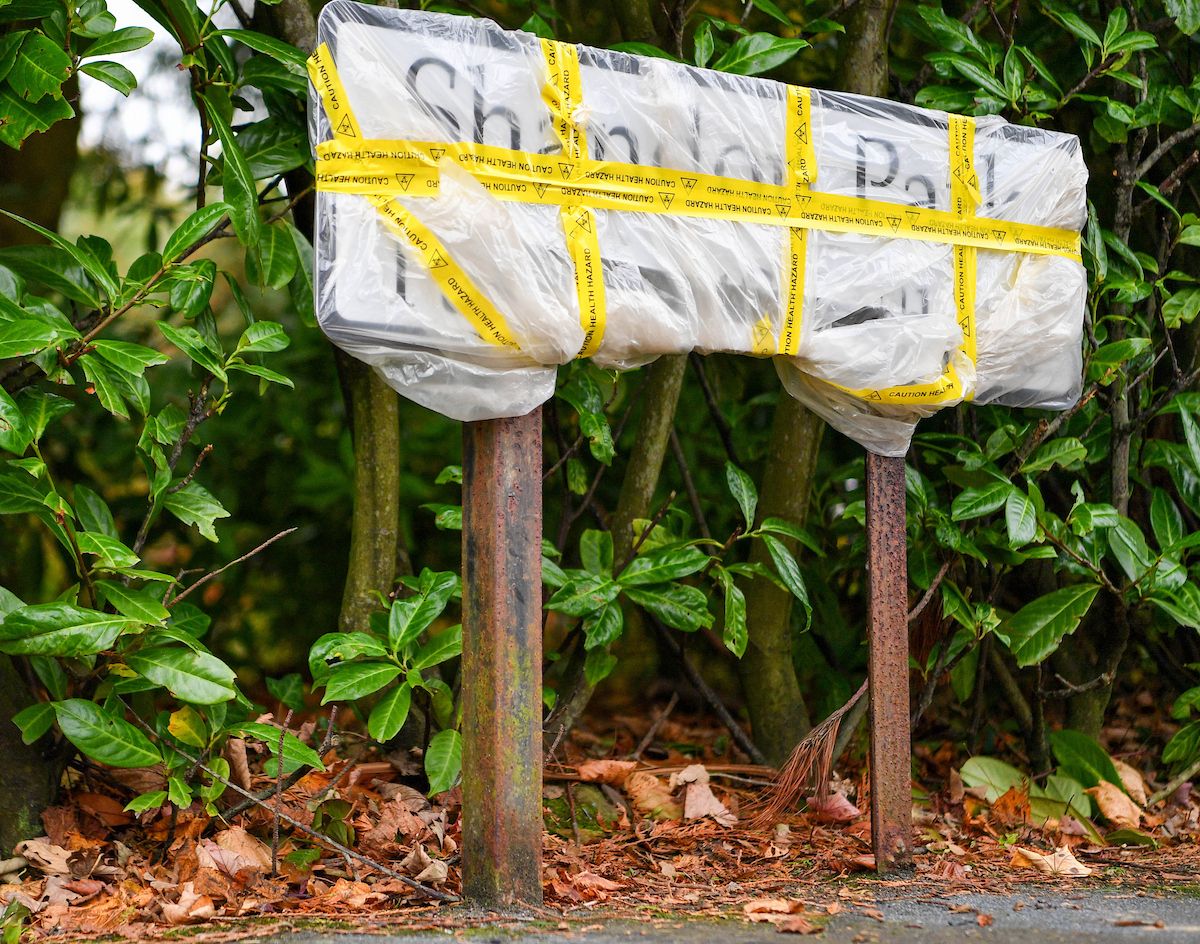A NEW survey has found that nine-out-of-ten people in Belfast supports the Council's new dual language signage policy.
Irish language campaign group Conradh na Gaeilge has released the new figures ahead of an Assembly motion by DUP MLAs which seeks to condemn the 2022 Belfast City Council dual-language street signage policy. On Saturday evening a street sign was vandalised in Shandon Park/Páirc an tSeandúin in East Belfast when the Irish part of the sign was cut away with an angle grinder.
The survey summarises the 536 streets approved since the introduction of Belfast City Council’s new dual-language street signage policy in October 2022. The research includes the most recent data as published by Belfast City Council.
Among those 536 streets, 244 have been approved directly through the Council’s People and Communities Committee, with the other 292 residential streets being approved through the Gaeltacht Quarter Scheme. The People and Communities Committee records first begin processing streets that met the 15 per cent threshold in January 2023, and continue through to October 2025.
When combined with the streets in the Gaeltacht Quarter scheme, the results for all 536 approved streets are as follows:
- In total, only 2.9 per cent of all residents surveyed across 536 approved streets opposed dual-language signage
- On 76 per cent of all 536 streets surveys, not a single resident opposed dual-language signage (409 out of 536 streets)
- Across all 536 streets surveyed, not one single street (0/536 = 0 per cent) returned a majority of residents opposed
- On average, 1.7 per cent opposition was received per street across 536 streets approved.
Excluding Gaeltacht Quarter Project (excluding 292 streets):
- In total, 9 out of every 10 people responding to the survey supported dual-language signage.
- On over 96 per cent of streets (235/244), more respondents to the survey supported than opposed dual-language signage.
- On over half (133/244 54 per cent) of all 240 streets surveyed, not a single resident opposed dual-language signage
- In total, only 3.9 per cent of all residents across 244 streets opposed dual-language signage.
Responding to the figures,Ciarán Mac Giolla Bhéin, Coordinator of Fís an Phobail, the West Belfast Irish Language Plean, and President of Conradh na Gaeilge, said: “The latest figures published by Conradh na Gaeilge today prove that, in reality, there is an incredibly tiny minority, 2.9 per cent, of residents opposing dual-language signage through the survey process provided to them by Belfast City Council. In contrast, nine out of every ten people responding to the surveys support Irish and English together.
"What we have here entirely contradicts long-standing complaints from the DUP and others, who have been boasting fictional mass opposition to signage in order to disrupt the implementation of the policy. That stance simply doesn’t stand up to scrutiny when you study the hard data. These figures show that opposition to dual-language signage is very, very low, with three out of every four streets being approved without a single resident responding in opposition.
"Rather than continuing to stoke tensions and sow division and fear, the DUP would be better spending their time and energy in implementing their outstanding obligations on Irish language rights including immediately appointing the Irish Language Commissioner and bringing forward an Irish language Strategy, promised in law since 2006. ”
Cuisle Nic Liam, Language Rights Coordinator with Conradh na Gaeilge, said: “In 2022 a large majority of Belfast City elected representatives adopted one of the most progressive street signage mechanisms anywhere in Ireland, formally recognising minority rights of the Irish language community as endorsed by the United Nations. Bilingual signage is an internationally recognised measure to ensure increased visibility of minority indigenous languages.
"That increased visibility leads to increased normalisation of the language and in turn increased tolerance to bilingualism in general. Recognising that the vast majority of the placenames come directly from Irish, this restorative indigenous language policy will see Irish returning to areas and streets where it was previously banned. When that street signage policy is set alongside their new Irish language policy adopted last week, Belfast is undoubtedly becoming an international ambassador for language rights.”
Commenting on the figures West Belfast MLA Pat Sheehan said: “The vibrant revival of the Irish language is continuing at pace, and Belfast is at the forefront of this momentum.
“Today’s figures provide clear evidence of the broad support for this policy, which was developed in line with international best practice and overwhelmingly endorsed by a majority of Belfast city councillors.
“This policy has been hugely successful, helping to boost the visibility of the language throughout our city.
“Sinn Féin will continue working to deliver on the rights of Irish language speakers and build a society of equals.”





